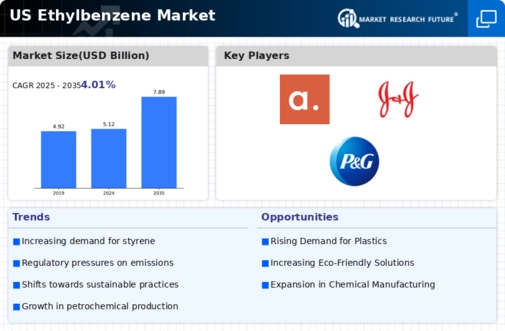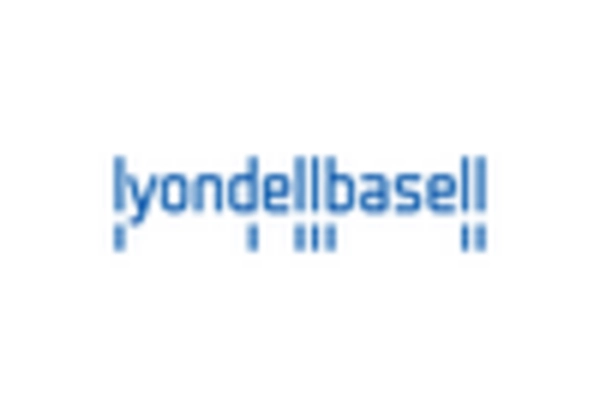Growth of the Styrene Market
The ethylbenzene market is closely linked to the growth of the styrene market, as ethylbenzene is a primary feedstock for styrene production. In 2025, the styrene market is projected to expand significantly, driven by rising demand in various applications, including automotive parts, packaging, and consumer goods. This growth is anticipated to increase the consumption of ethylbenzene, as manufacturers ramp up production to meet the needs of the styrene market. The correlation between these two markets suggests that as styrene demand rises, so too will the demand for ethylbenzene, creating a favorable environment for producers. This interdependence highlights the importance of monitoring trends in the styrene market to gauge future developments in the ethylbenzene market.
Rising Demand from End-User Industries
The ethylbenzene market is experiencing a notable increase in demand from various end-user industries, particularly in the production of styrene, which is a key component in plastics and synthetic rubber. The growth of the automotive and construction sectors in the US is driving this demand, as these industries increasingly utilize styrene-based products. In 2025, the demand for styrene is projected to grow at a CAGR of approximately 4.5%, which directly influences the ethylbenzene market. Additionally, the expansion of the packaging industry, which relies heavily on styrene for manufacturing containers and films, further propels the need for ethylbenzene. This trend indicates a robust market environment for ethylbenzene, as it plays a crucial role in meeting the needs of these expanding sectors.
Regulatory Support for Chemical Manufacturing
The ethylbenzene market benefits from favorable regulatory frameworks that support chemical manufacturing in the US. Government initiatives aimed at promoting domestic production and reducing reliance on imports are likely to enhance the competitiveness of local manufacturers. In 2025, the US government has implemented various policies that encourage investment in chemical production facilities, which could lead to an increase in ethylbenzene output. Furthermore, compliance with environmental regulations is becoming more manageable due to advancements in production technologies, which may reduce operational costs for manufacturers. This supportive regulatory environment is expected to stimulate growth in the ethylbenzene market, as companies are incentivized to expand their production capabilities and innovate.
Increased Investment in Chemical Infrastructure
Investment in chemical infrastructure is a critical driver for the ethylbenzene market. In 2025, there is a noticeable trend of increased capital expenditure by companies aiming to enhance their production capabilities and expand their facilities. This influx of investment is likely to lead to the construction of new plants and the upgrading of existing ones, which could significantly boost ethylbenzene production capacity. Additionally, the establishment of strategic partnerships and joint ventures among key players in the chemical industry is expected to facilitate knowledge sharing and technological advancements. As a result, the ethylbenzene market may experience enhanced operational efficiencies and improved product offerings, positioning it for sustained growth in the coming years.
Technological Innovations in Production Processes
Technological advancements in the production processes of ethylbenzene are significantly impacting the market landscape. Innovations such as improved catalytic processes and energy-efficient methods are enhancing production efficiency and reducing costs. In 2025, the introduction of new catalysts is expected to increase yield rates by up to 15%, thereby making the production of ethylbenzene more economically viable. These advancements not only lower production costs but also contribute to sustainability efforts by minimizing waste and energy consumption. As manufacturers adopt these technologies, the ethylbenzene market is likely to witness increased competitiveness and profitability, attracting further investments and fostering growth.

















Leave a Comment